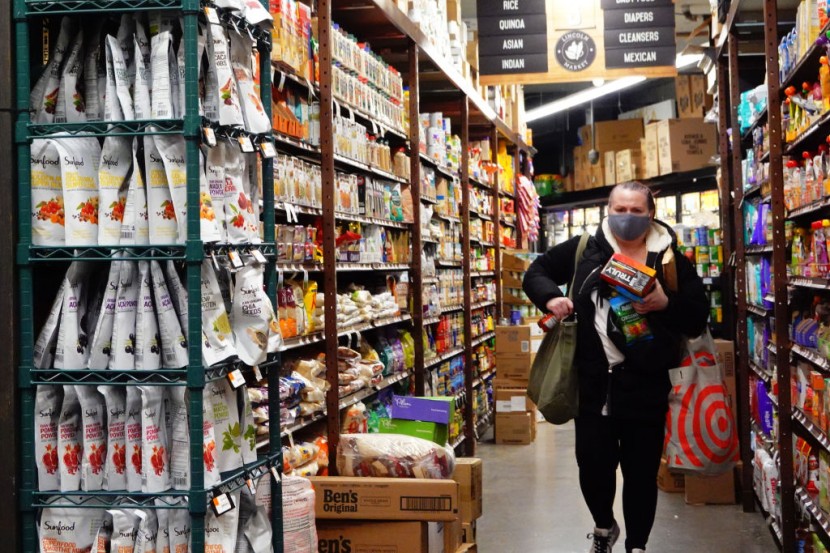
Long queues have returned to food banks around the country as working Americans grew overwhelmed amid inflation, in hopes to seek assistance to be able to feed their families.
With gas rates and supermarket prices on the rise, many individuals are seeking charitable meals for the first time, and more are walking. In the United States, inflation is at a 40-year high, and petrol prices have been rising since April 2020, with the national average temporarily reaching $5 per gallon in June. Rapidly increasing rents and the termination of government COVID-19 aid have also had a financial impact.
US Food Banks Struggle To Meet Latest Demands
Food banks, which had found some relief when people returned to work during the earlier shutdowns, are now struggling to meet the latent demand, even as federal programs provide less food to distribute, grocery store donations are declining, and money donations aren't going nearly as far.
Food costs have risen as a result of state governments terminating COVID-19 disaster designations, which temporarily raised benefits under SNAP, the federal food stamp program that serves 40 million Americans.
Despite a slight drop in demand late last year, charitable food distribution has remained considerably beyond levels seen before the coronavirus outbreak. Officials with Feeding America said second-quarter statistics will not be available until August, but they are hearing anecdotally from food banks around the country that demand is growing.
According to St. Mary's spokesperson Jerry Brown, the Phoenix food bank's main distribution facility served 4,271 people during the third week of June, a 78 percent increase over the 2,396 families supplied during the same week the previous year.
Every workday, more than 900 families queue at the distribution facility for an emergency government food package with items such as canned beans, peanut butter, and rice, according to Brown. St. Mary's adds things purchased with monetary donations, as well as food donated by local supermarkets, such as bread, carrots, and pork chops, for a total package valued at around $75, according to AP News.
As US authorities strive to rein in sky-high prices while avoiding an economic downturn, new inflation data released on Wednesday revealed a substantial acceleration of price increases.
According to federal government data, prices grew at the fastest rate in four decades in June, continuing a period of inflation that has stretched household budgets across the country. As per the Bureau of Labor Statistics, the consumer price index, or CPI, was 9.1 percent in June, up from 8.6 percent in May. This is the most significant 12-month gain since December 1981.
As reported by the census, the consumer price index jumped 1.3 percent every month in June, well exceeding the 1 percent increase witnessed in April. The fresh data comes as the Federal Reserve continues its policy of raising interest rates to combat inflation by slowing the economy and reducing demand. However, the actions risk sending the country into a recession.
Read Also : Rome Thrown Into Political Chaos as Italian President Reject's Prime Minister Mario Draghi's Resignation
US Lawmakers Race To Combat Rising Commodity Prices
The Fed may pursue a more aggressive strategy to raise interest rates in response to the high inflation statistic. The fresh inflation report comes just days after employment statistics revealed stronger-than-expected hiring last month, indicating that the Fed's borrowing rate increases have not discouraged companies, as per ABC News.
Prices are growing at the highest rate in four decades, an unpleasant trend that has handed Republicans a great talking point two months before the midterm elections. Republicans are paying extensively in a blitz of campaign advertising depicting a grim sense of economic disarray in an attempt to make inflation a political burden for President Joe Biden and Democrats.
From early April through the beginning of July, candidates in House, Senate, and governor contest around the country spent about $22 million broadcasting approximately 130,000 local and national television commercials mentioning inflation, according to Kantar's Campaign Media Analysis Group. Inflation was the tenth most often stated concern by Democrats and the eleventh most frequently mentioned topic by Republicans, highlighting how important the issue is to both parties this election season.
The release of data on Wednesday showing that prices in June rose 9.1 percent over the previous year provided Republicans with new ammunition against Biden and his party, including criticism of Democrats for passing a $1.9 trillion stimulus package last year and efforts to push through additional spending in a sweeping climate and economic package known as 'Build Back Better.'
President Joe Biden's poll scores are already suffering as a result of the increased attention on inflation. According to a New York Times/Siena College survey released this week, his popularity rating is only 33%, with 20% of respondents citing employment and the economy as the most pressing issue confronting the country. Inflation and the expense of life quickly followed. The survey also revealed that the contest for control of Congress is unusually close.
While petrol prices have dropped from their record of $5 per gallon and there are hints that inflation may be decreasing, consumers are unlikely to feel better off anytime soon. The average national price for a gallon of gas remains substantially higher than it was a year ago, at $4.60 against $3.15 in 2021, New York Times reported.
Related Article : Democrats Urge To Avoid Midterm Disaster, Push To Revive President Joe Biden's Agenda To Fight US Inflation
@YouTube
© 2026 HNGN, All rights reserved. Do not reproduce without permission.







